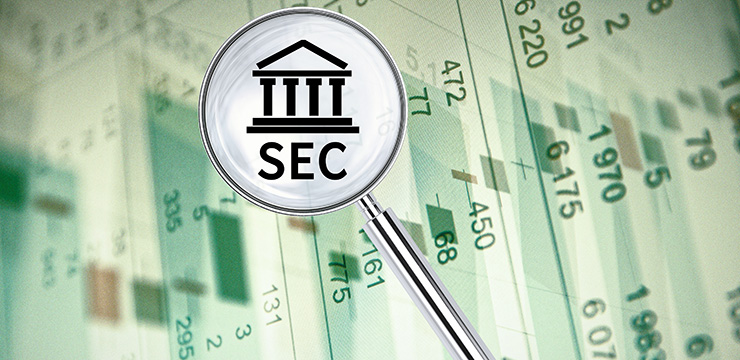On January 17, In AA v Persons Unknown [2019] EWHC 2556 (Comm), the Commercial Court held that a cryptoasset such as Bitcoin is a form of property capable of being the subject of a proprietary injunction. Although this is not the first case before the English courts that considers whether cryptoassets might be property, it is the most detailed and effectively confirms the position set out in the Legal Statement of the UK Jurisdictional Taskforce (UKJT) on cryptoassets and smart contracts from November 2019. The decision is likely to be a matter of importance in a variety of commercial contexts from taxation and sale of goods legislation to the taking of security and insolvency scenarios.

Cryptoassets as Property
In a co-authored piece published in Thomson Reuters’ Practical Law, Orrick’s Jacqui Hatfield and Rebecca Kellner recently considered whether cryptoassets can constitute property by analyzing the issue through the lens of taking security over cryptoassets. In it, the pair note that “security may only be taken over property, and the type of security that can be taken over a particular cryptoasset, and the process for doing so, will depend on the type of property that cryptoasset amounts to or represents. Therefore, in order to establish whether security may be taken over a cryptoasset, the type of property (if any) which that cryptoasset represents will need to be considered.”
To work out what type of property a cryptoasset represents, they suggest this would be looked at by the courts in the same manner with which the Financial Conduct Authority analyzes cryptoassets – by looking through the “crypto” label to consider what the token represents underneath. The court would effectively consider the underlying function of that token and the rights it confers on its owner.
The authors then set out the law as it stands as it applied to classifying cryptoassets as property:
“under English law, only (i) real property (land) and (ii) personal property (choses in possession (property that is possessed, i.e. goods or equipment) and choses in action (rights enforceable against a third party, e.g. money in a bank account or shares in a company)) are considered property.
“Cryptoassets are not real property, nor may they be physically possessed. Therefore, they can only be considered property to the extent they are choses in action. Cryptoassets that represent a right that may be enforced against a third party may be treated as choses in action and therefore, fall within the definition of property. Examples of such cryptoassets include the following:
- Security tokens that represent shares or debentures.
- Asset backed tokens that represent property.
- Tokens that have been issued under terms which are enforceable against a third party.
“If a cryptoasset does not give the person holding those tokens any rights against a third party, it cannot be treated as falling within the definition of a chose in action. It would also not fall within the definition of real property, nor could it be possessed, so in this scenario, it is difficult to see how such a cryptoasset would amount to property under this strict definition of property, which enables security to be taken over it. Examples of these types of cryptoassets include the following:
- Bitcoin, Ether and other cryptoassets that are fully decentralized and not issued by a central issuing authority. These give no rights to the holder which are enforceable against a third party.
- Certain tokens issued by a central party for fundraising purposes (as in the case of initial coin offerings) that do not attach any claim against the issuer.” (emphasis added)
Despite the speed with which cryptoassets have infiltrated the financial system, the fact is that in England and Wales, what a cryptocurrency is in legal terms (a right, property or otherwise), owing largely to this somewhat anachronistic categorization of what constitutes property, remains unclear and unresolved.
In noting that there are already futures and exchange-traded notes in Bitcoin, Marc Jones of Stewarts Law LLP draws a comparison with conventional securities to highlight how the legal framework regarding what constitutes property in England and Wales is behind the curve when it comes to cryptoassets: “imagine a scenario where shares in a public company are regulated by a legal system in terms of how they can be promoted to the public; what information must be provided; to whom they can be promoted; in which jurisdictions, and so on. But the same legal system provides no answer as to how legal title in a share passes; whether and how security can be given over a share; what happens to a share in the event its owner becomes insolvent; whether a share can be trust property; and whether a share can be subject to a proprietary freezing order in the hands of an alleged fraudster.”
In November last year, the UKJT published its analysis of the status of cryptoassets and smart contracts under the law of England and Wales and concluded that cryptoassets are capable of being a form of property in law. It also determined that the novel features of cryptoassets (i.e. intangibility, distributed transaction ledger use, and decentralization) did not disqualify them from being property.
With regard to ownership, the legal statement declared that a person can acquire knowledge and control of a private key, and therefore become owner of the associated cryptoasset. This is considered to be the same as a person lawfully being in possession of a tangible asset and therefore being presumed to be the owner. In much the same way, a person can hold the key on behalf of another (e.g. an employer or client or on trust); and ownership can be shared through multiple keys. A person who unlawfully acquires a key through hacking is not the lawful owner, in the same way as someone who steals property is not the legal owner of that property.
The Legal Statement emphasized the ability of the English common law to adapt to new technologies and to rise to the challenge of applying existing law to new and unexpected situations. However, the Legal Statement is not legal advice, nor is it law. It is not a considered ruling from judges by way of case law, nor is it a legislative change. Therefore, while it provides (i) a potentially valuable analytical framework against which to understand the application of existing law and regulation and (ii) clarity in relation to the availability of existing legal remedies, the conclusions in the Legal Statement are not definitive and are subject to challenge.
AA v Persons Unknown
The case of AA v Persons Unknown concerned a private application for an injunction by a UK insurer. The UK insurer had insured on of its clients, itself an insurance company (albeit a Canadian one), against cyber crime attacks.
The client was the subject of an attack, where a hacker managed to encrypt all of the client’s computer systems and then subsequently sent a ransom request for payment in Bitcoin in exchange for the decryption tool. The insurer agreed to pay the ransom on behalf of the client. The insurer then hired a company to track the Bitcoin, which were placed on an account held by an exchange, Bitfinex. The insurer was seeking, among other things, a proprietary injunction in respect of Bitcoin held with Bitfinex.
Bryan J in AA v Persons Unknown noted that cryptoassets meet the four criteria set out in Lord Wilberforce’s classic definition of property in National Provincial Bank v Ainsworth [1965] 1 AC 1175 as being definable, identifiable by third parties, capable in their nature of assumption by third parties and having some degree of permanence.
The judge identified that traditionally, English law views property as being of only two kinds: choses in possession and choses in action, and that cryptoassets do not sit neatly within either category.
However, the judge considered that on a detailed analysis, it is “fallacious” to proceed on the basis that English property law does not recognize other forms of property. A cryptoasset might not be a chose in action on a narrow definition of the term, but that does not mean it cannot be treated as property. As a result, the Bitcoin (and by implication, other cryptoassets) were considered to be property and thus could be the subject of a proprietary injunction. Further, the judge noted his view that the Legal Statement was an accurate statement as to the position under English law.
Bryan J also noted that there are two English authorities where crypto currencies have been treated as property, albeit that those authorities do not consider the issue in depth. These are:
- Vorotyntseva v Money-4 Ltd (T/A Nebus.com) and others [2018] EWHC 2596 (Ch), where there was no suggestion that crypto currency could not be a form of property, or that a party amenable to the court’s jurisdiction could not be enjoined from dealing in or disposing of it, and the High Court granted a freezing order against a company (and its directors) in respect of an amount of crypto currency which the claimant had given to the defendants. On the evidence before the court, there was a real risk of dissipation.
- Robertson v Persons Unknown (unreported), 16 July 2019, (Commercial Court), where, following a theft of a number of Bitcoins, the judge accepted the argument that the Claimant had a proprietary claim over the Bitcoin and proceeded on the basis that Bitcoin could be personal property before making an asset preservation order in relation to Bitcoins which were stolen. By granting this order, the High Court treated the Bitcoin as property, which would allow for security to be taken over it. The Court also considered the UKJT analysis as ‘compelling’ in granting the order.
Implications
This is the first reported judicial consideration of the UKJT’s analysis of cryptoassets (otherwise a non-binding statement) and provides some further legal certainty over the classification of cryptoassets. Classifying cryptoassets as property has far-reaching implications that can have a real impact on how the asset can be dealt with. It enables (i) the law to recognize the legal rights of crypto currency investors, (ii) cryptoassets to sit more comfortably within the existing legal framework on property, which governs how they can be owned, used and transferred, as well as whether they can be charged and whether they would form part of insolvency/bankruptcy procedures, and (iii) courts to impose freezing and proprietary injunctions over them in cases of cyber attacks and theft.
It should be noted that the case considers the question of whether cryptoassets could be property only in the context of proprietary injunctions and therefore it is possible that alternative views could be reached in the context of other areas (e.g. corporate insolvency). Although this judgment is a helpful indication of how the law could apply in those circumstances, it would not be a binding precedent in matters beyond the context of proprietary injunctions. Nevertheless, the analysis relating to the definition of “property” did not solely rely on the definition of “property” in the context of injunctions but was drawn from broader sources, which may prove instructive for the application of this analysis in other contexts. Further, the alternative interpretation (i.e., that cryptoassets can never be property) could lead to unfair and unexpected results.
With the crypto currency market continuing to grow exponentially, this increased legal certainty will likely serve to shore up market confidence. However, while the judgment is a helpful confirmation that cryptoassets could be considered property, it remains to be seen whether the other conclusions of the Legal Statement of the UKJT will be confirmed in the English courts – e.g., the recognition of a valid granting of security over cryptoassets. In fact, the City of London Law Society’s submission to the UKJT suggests it prefers to wait for a dispute to work its way to the Supreme Court before the fundamental legal status of cryptoassets is clarified – an obviously unsatisfactory result for interested parties such as investors, insolvency practitioners and trustees.
As Sir Geoffrey Vos, Chancellor of the High Court, remarked in a speech at the University of Liverpool in May 2019, when considering why smart contracts had not become ubiquitous yet: “mainstream investors are unwilling to part with real money without the assurance that there is a legal foundation for their engagement. Thus far, the legal uncertainty that pervades the use of so-called crypto currencies and cryptoassets for financial transactions has meant that the starting line has not been crossed. It will be crossed at some stage soon.”
While the relative legal certainty offered by Bryan J in AA v Persons Unknown does not represent a crossing of the proverbial starting line for smart contracts and cryptoassets to become more mainstream in financial transactions envisaged by Sir Geoffrey, it does bring this moment one step closer.




